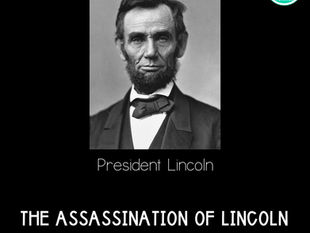
Are you a student learning about the Civil War? Are you a teacher preparing to teach about the Civil War? This website is for both of you! It will even be helpful if you are just curious about the Civil War.
If you are a student, you can read about the Battle of Gettysburg in the sections below. If you have questions as you read, you can send me a message, and I will do my best to get back to you.
If you are a teacher, you can use this website as a resource for yourself and your students, or you can purchase my printable reading passages and comprehension questions. They are available at Teachers Pay Teachers.

The Battle of Gettysburg
July 1 - 3, 1863
Bolstered by his victory at Chancellorsville, Lee decided to attack the North again. His first attack had led to a defeat at Antietam the previous fall. Lee hoped that a successful attack on the North would convince Britain and France to recognize the Confederacy as an independent country. The South was in desperate need of support and supplies and hoped they could get help from European partners.
Lincoln, furious with the Union defeat at Chancellorsville, replaced Joseph Hooker with Major General George Meade. Meade and the Union army chased the Confederates as they made their way into Pennsylvania.
Legend tells that on July 1, 1863, a poorly outfitted Confederate division arrived in Gettysburg looking for shoes. The division surprised two Union cavalry brigades already in the city, and fighting began. The Confederates were able to push the Union soldiers out of Gettysburg to the high ground of Cemetery Hill.
Realizing his advantage against a smaller Union force, Lee quickly ordered an attack on Cemetery Hill. However, Commander Ewell, who had replaced Stonewall Jackson after his death, refused to attack, believing the North had too strong of a position on the hill. That night, three more Northern corps arrived, and the army stationed itself along the high ground of Cemetery Ridge from Culp’s Hill to Little Big Top.
The next morning, Lee again ordered an attack on the Union forces. Again, his commanders were hesitant to attack the Union holding the high ground. All day long, the two sides battled, but the North held its position. Each side suffered thousands of casualties.
On the third morning, Lee again ordered an attack on the Union army. Under Lee’s orders, Commander George Pickett led fifteen thousand Confederate soldiers against the center of the Union forces. The men had to charge three-fourths of a mile across an open field to reach the Union lines. The ill-fated Pickett’s Charge led to over six thousand Confederate casualties. Recognizing that he had been beaten, Lee pulled his army back and waited for a Northern attack that never came.
Under heavy rain, the Confederate army retreated to Virginia. The battle marked the farthest north the Confederacy would reach throughout the war. The Confederacy would not be recognized by Britain or France, and the Union would not be scared into a peace treaty. Lee understood that Gettysburg had been his mistake, and he offered Confederate President Jefferson Davis his resignation. Davis refused to accept it.
The Battle of Gettysburg was the bloodiest battle of the entire Civil War. After three days of fighting, ten thousand soldiers were dead, and thirty thousand were wounded. Lee had lost one-third of his entire army.
Want to learn more about the Civil War? Check out the links below!
Causes of the Civil War
The Battle of Chancellorsville
The Battle of Spotsylvania Court House
The Second Battle of Cold Harbor
Surrender at Appomattox Court House





